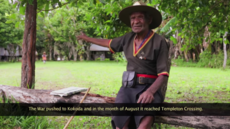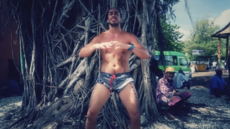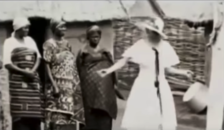Hawaiian Cowboys - The Little Known History of Paniolo
Picture Hawaii. What do you see? Surf, sun, sand and... Cowboys?
It might be hard to believe, but the history of cattle ranching and Paniolo (Hawaiian cowboys) stretches back centuries.
It could be argued the cattle that graze the rolling and lush patures of northerly Waimea, are among the happiest in the world. With sea views and food in plentiful supply, it's easy to see why. But in 1793 it was on an entirely different landscape. Across rough lava and up the hot and steep arid mountain trails of south Kona is where the beasts first made a rough and tumble debut. Navigator George Vancouver landed the Kingdom of Hawaii’s first cows in Kealakekua, a gift to King Kamehameha I in 1793. As more arrived and those creatures multiplied, they ignited an industry that came decades before the great cattle ranching boom of the American West.

Kona’s piece of that history is now the focus of an exhibit in the Smithsonian-affiliated Kona Historical Society’s H.N. Greenwell General Store Museum. The installment of original artifacts, photos, diary entries and tax ledgers will be on show until July 30.
“Kona’s story is a little known one,” says Joy Holland, executive director of KHS, “but it’s an important one nonetheless.”
Some of the items on show include black and white photos depicting cows—herded by horses and paniolo of Hawaiian, Chinese and Japanese ancestry—swimming in the sea to the ships that would take them to Honolulu and beyond before area docks were installed. Physical artifacts are also on display, such as branding irons from the different ranching families that made a living in Kona after an early kapu (prohibition) on taking cattle was lifted. A set of massive long horns suggests that Hawaii’s cattle perhaps weren’t the same mild mannered mooers of present day.
Mina Elison, Kona Historical Society’s curator and great granddaughter of famous Hawaiian-Chinese paniolo Willie Thompson, explained the significance of one of the treasures: A map showing the location of the Pa Nui, the Great Walled Lot. This rock wall enclosure once stretched 480 acres with walls reaching eight feet; it was an engineering feat for the time and Hawaii’s first cattle corral. Playing the important role of keeping the cattle contained.

Prior to the corral’s construction, Archibald Menzies, a ship’s surgeon wrote this in his 1793 journal: “When they [cattle] landed they ran up and down the country in the wildest manner to the [sic] no small dread and terror of the natives, who fled from them with the utmost speed in every direction.”
As time and nature eroded the Great Walled Lot, some of the massive beasts broke free, colonizing the entire Island and terrorizing Kona residents until the later Kuakini Wall was built to protect homes from the free ranging cows. In the 1830s, vaqueros (cowboy ranchers) from what is today the Monterey, California area were brought in to teach Kona residents how to wrangle their wild terrors into an industry.
The exhibit lines the walls of the permanent antique shop displays within the historic H.N. Greenwell Store. The store is a holding of the Kona Historical Society.
“We are mindful that we are sharing the history of families that come from this community,” says Holland. “And, we hope to give visitors a clear-eyed view of what Hawaii is about by offering exhibits like this one.”
Source: Hawai'i Magazine




